Chayotes: [Cultivation, Irrigation, Care, Pests and Diseases]
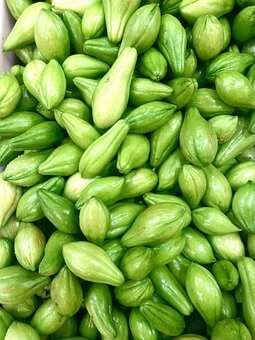
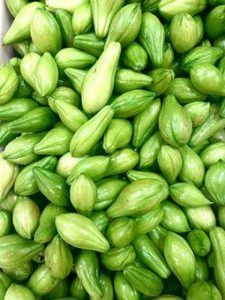 The Sechium edule plant is a widely cultivated vegetable in Mexico and some Central American countries. It is a species of the Cucurbitaceae family, the same family to which melons, cucumbers and pumpkins belong.
The Sechium edule plant is a widely cultivated vegetable in Mexico and some Central American countries. It is a species of the Cucurbitaceae family, the same family to which melons, cucumbers and pumpkins belong.
Although there are no historical records before the fifteenth century, it is considered that chayote was used since pre-Columbian times.
In fact, it is believed that the Spanish introduced its cultivation to some Caribbean islands and that is how it spread to other regions.
Chayote is currently known to have antihypertensive and antioxidant properties. Therefore, it is not uncommon for it to be used in traditional medicine as a diuretic, anti-inflammatory, as well as to treat kidney calcifications and arteriosclerosis.
In addition to being a food source, chayote has a great economic impact since each plant can produce about 47 kilograms of fruit per year. In extensive crops, such a level of production represents a significant monetary gain.
Because the seed and fruit of the chayote are not preserved over time, there is no archaeological evidence to specify data on the antiquity of its origin and management.
Important points when planting a chayote:
- Scientific name: Sechium edule.
- Common name: Chayote, chayotera, guatila, air potato, hedgehog.
- Height: 2 meters.
- Light requirement: Direct light and partial shade.
- Temperature: Temperate climates (13ºC to 21ºC).
- Irrigation: Frequent.
- Fertilizer: Organic fertilizer.
What characteristics does chayote have?
The chayote is a perennial plant that renews itself every year and can grow up to 15 meters long and 2 meters high. It is a climbing species consisting of root, stem, fruit and seeds. First of all, chayote roots are adventitious and fibrous.
Occasionally, reserve bulbs form at their terminal ends, which are known as «chayotextle». These tubers are widely used in traditional Mexican cuisine. In the case of the stem, it has two classes, one underground, called a brachyblast, from which the second type of stem sprouts.
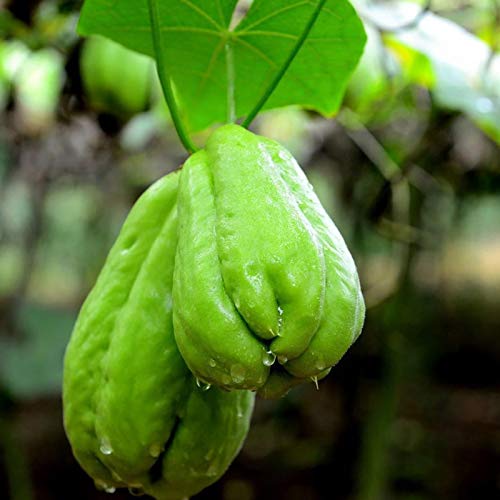
The second type is made up of numerous young and climbing stems from which leaves, tendrils, flowers or branches are born. Chayote leaves are simple and alternate. They can measure from 8 to 15 cm long. The flowers are unisexual: the female ones are solitary and the male ones are grouped in clusters 10 to 30 cm long.
The fruit is a fleshy and edible berry which can have different shapes and colors, from pale green to dark green, and even yellow. It measures from 7 to 26 cm long and can weigh from 300 gr to 2 kg. The seeds, or pips, have an oval shape. They are edible, smooth, compressed and very soft.
They measure 3 to 5 cm long and germinate inside the fruit.
When to sow chayote?
The time in which the chayote plant is traditionally planted is during the months of April and May to take advantage of the rainy season.
Where to plant the chayote?
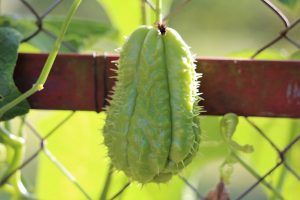 The chayote needs wide spaces protected from strong winds, as well as supports and guides to grow. To do this, it is recommended to use the trellis technique, that is, place sticks and stakes next to the plant to guide its vertical growth.
The chayote needs wide spaces protected from strong winds, as well as supports and guides to grow. To do this, it is recommended to use the trellis technique, that is, place sticks and stakes next to the plant to guide its vertical growth.
Also, this plant can be grown in temperate climates, where temperatures range between 13ºC and 21ºC. However, it must be protected from temperatures below 5ºC because the plant can be damaged.
On the other hand, it is recommended to keep chayote in the shade during its early stages, especially if outside temperatures are high. However, she will have no problem receiving direct sunlight once she is established.
How to prepare the land?
The chayote plant requires moist soil with abundant organic matter. Clay-sandy soils favor it, with good drainage and medium to good fertility.
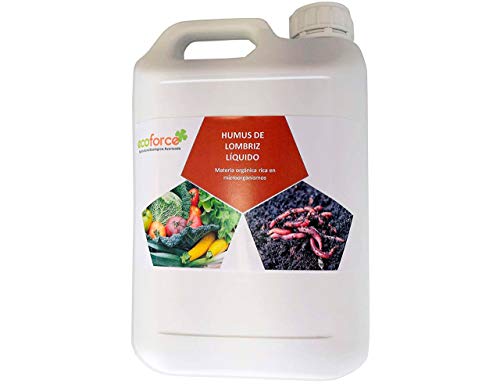
To prepare the land, the soil must be removed, the weeds removed, fertilized, the guides installed and the stumps dug.
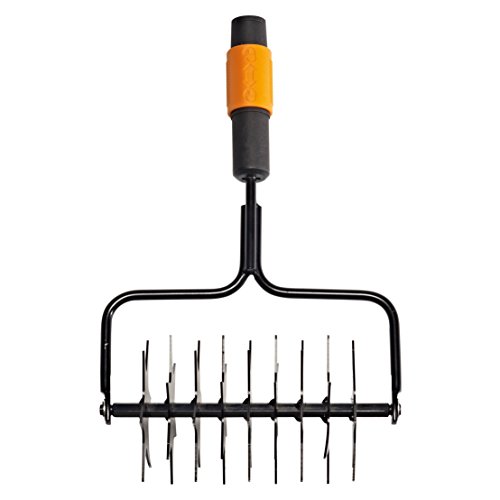
To fertilize the soil, it is recommended to apply organic fertilizers or manure.
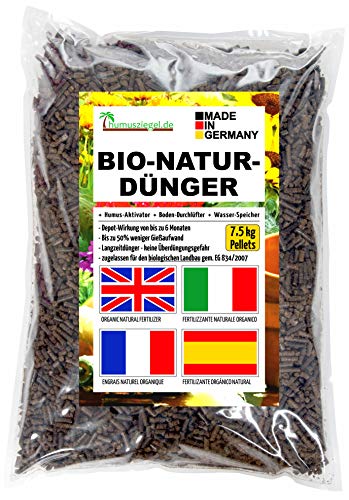
How do we water chayote?
Chayote is a vegetable that requires frequent watering, especially during the dry season, since the root system is shallow and the plant’s evapotranspiration is very high.
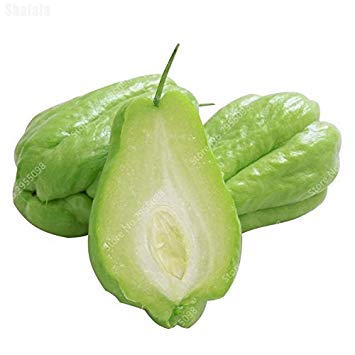
In the case of extensive crops, micro-sprinkler irrigation is recommended, as it allows the root area to be moistened. On the other hand, hose irrigation can be used in the case of small crops.
How often do we water the chayote?
The frequency of irrigation will depend on the type of soil and the climatic conditions. It is recommended to apply 1 or 2 times a week, increasing the regularity in the dry or hot season.
How to plant a chayote step by step?
The easiest and fastest way to grow the chayote plant is to use a ripe fruit in which the seed has germinated. The steps to follow are shared below:
- Select a ripe, whole fruit with good texture and shape.
- Keep it in the shade, in a humid environment, and wait until the seed produces a sprout.
- Ripe fruit can also be placed on a bed of moist substrate, leaving only the top of the fruit exposed.
- As soon as the shoot has grown 15 centimeters, gradually expose it to brighter places and continue applying water once a week.
- Transplant when the plant has reached 20 centimeters in height to a stump 25 centimeters in diameter and 30 centimeters deep.
What care does chayote need?
Chayote is an easy plant to grow and does not require much care after it is established. Among the most important measures are the following:
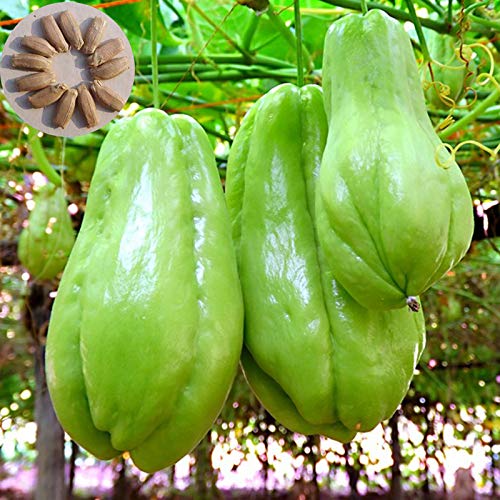
- Protect it from low temperatures.
- Maintain frequent watering to avoid water stress.
- Control weeds during the first months of growth.
- Prune the guides that are not born from the stem or that do not present good development.
What pests and diseases affect chayote?
Among the pests that mainly affect chayote are the screwworm and the cucumber worm, which attack the tender fruits and leaves of the plant.
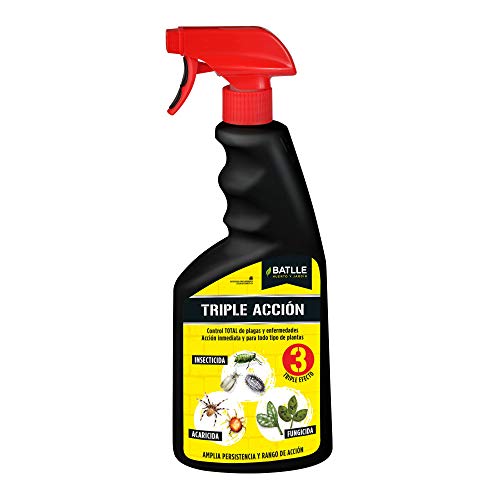
With regard to diseases, there are those produced by Oidium, by Colletotrichum, as well as warts, caused by the fungus Mycovellosiella cucurbiticola.
References
- http://www.mag.go.cr/bibliotecavirtual/F01-0658chayote.pdf
- https://infoagronomo.net/guia-tecnica-de-cultivo-de-chayote-pdf/
- http://www.itzonamaya.edu.mx/web_biblio/archivos/res_prof/agro/agro-2015-19.pdf
- http://www2.biodiversidad.gob.mx/usos/alimentacion/chayote.html
- https://www.medigraphic.com/pdfs/medisur/msu-2016/msu166b.pdf
- https://www.gob.mx/cms/uploads/attachment/file/231849/Conservaci_n_y_multiplicacion_de_una_coleccion_de_sechium_spp.pdf
- https://www.gob.mx/cms/uploads/attachment/file/231857/El_chayote_volumen_1.pdf
- https://www.uaeh.edu.mx/scige/boletin/icap/n5/r1.html
- http://repositorio.iica.int/bitstream/handle/11324/2978/BVE17058902e.pdf;jsessionid=833F3A5D83A8B4A0F2E3CB3D1B0B029B?sequence=1
- https://www.academia.edu/25370421/Espinas_y_pulpa_el_chayote_planta_mesoamericana_Gu%C3%ADa_de_la_exposicion_Museo_Nacional_de_Agricultura



![Photo of Citrus Diseases: [Types, Characteristics and Prevention]](https://www.complete-gardening.com/wp-content/uploads/2022/08/citrus-diseases-types-characteristics-and-prevention-390x220.jpg)
![Photo of Indoor Plant Care: [Soil, Humidity, Pruning and Problems]](https://www.complete-gardening.com/wp-content/uploads/2022/08/indoor-plant-care-soil-humidity-pruning-and-problems-390x220.jpg)